What we do
We work with individuals like you – patients, family, friends, the general public and staff – to raise money for good causes – those things not covered by core NHS funding – so that together, we can make a real difference to people’s lives.
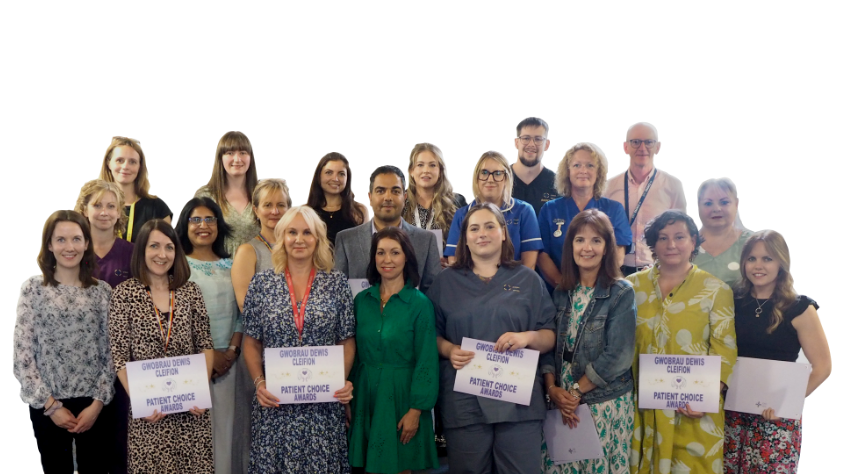
Funds are raised in a number of different ways:
Your impact
We fundraise for a purpose. That purpose is to help us provide the best possible care for our patients.
If you need some inspiration and motivation to fundraise, look no further than these examples of the impact so far. But we want to go further. With your support.
How we make a difference
Pioneering research
Research to develop, trial and roll out faster, more targeted and effective treatments
for patients is supported by charitable funds.
Targeting tumours

Targeting tumours
Thanks to your generous donations people having cancer treatment are now benefiting from far more targeted radiotherapy.
This is due to a partnership between the South West Wales Cancer Centre at Singleton Hospital and Swansea University, which started in spring 2024 and has been funded by £73,000 from the South West Wales Cancer Fund, one of the funds that comes under the umbrella of Swansea Bay Health Charity.
The money pays for sessions on a very high-spec MRI scanner owned by Swansea University and located in the ILS2 building on the Singleton campus.
These MRI scans can take place on the same day as a CT scan in the hospital just 200 yards away, helping doctors to build up the most accurate picture when planning radiotherapy, meaning the treatment is more targeted and can be started quicker.
Previously, the scans would have been done on separate occasions.
Up to 300 patients will benefit over the next two years. Although it will be used for several types of cancers, it will initially be for patients with brain tumours.
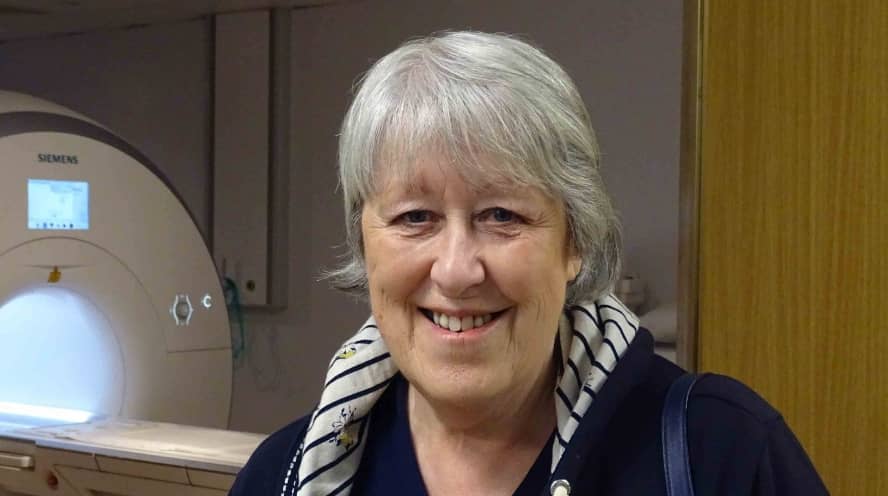
Catherine Sherry was the first patient to benefit from the double scan programme.
Catherine Sherry, who lives near Neyland, was the first person to benefit from this new approach.
It’s amazing, she said.
They told me they get the results really quickly so they can look at the scans and start the radiotherapy much quicker.
Better cancer treatments

Better cancer treatments
Money raised from Jiffy’s Cancer 50 Challenge is split between the cancer centres at Velindre in Cardiff and Singleton Hospital in Swansea and contributes to research.
The annual charity cycle is championed by Welsh rugby legend Jonathan ‘Jiffy’ Davies.
Sarah Gwynne, consultant clinical oncologist at the South West Wales Cancer Centre, said: “All the money raised from this event goes into funding our programme of radiotherapy research fellows.
“These are senior trainees who take one or two years out of training to do research, one of whom has taken part in the last two races.
“Work done by these individuals, under the supervision of Swansea consultants, working with partners around the UK, has supported a range of developments using radiotherapy to treat cancer, locally and UK-wide.
“These advances aim to improve outcomes by being more effective at killing cancer cells, but also minimising the side effects of treatment. We could not do this work without your support and are very grateful.”
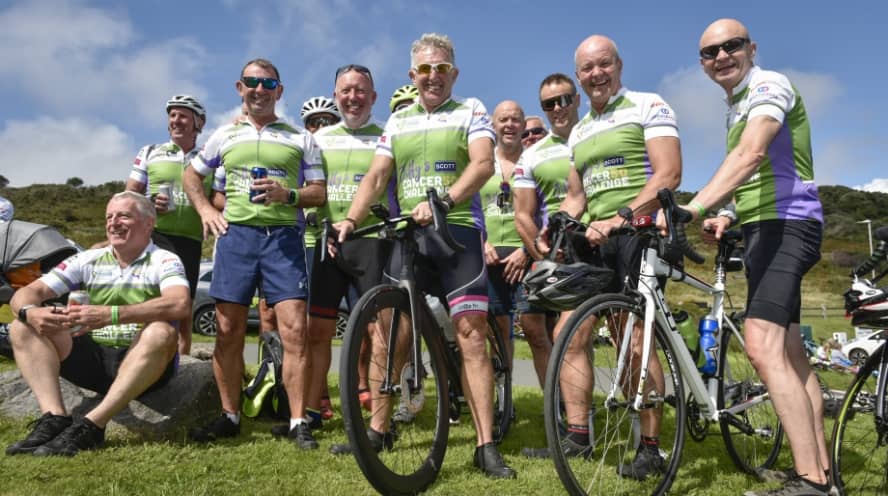
Jonathan ‘Jiffy’ Davies and riders during the 2023 Jiffy’s Cancer 50 Challenge.
In 2023, 600 riders joined Jiffy’s bike ride from Cardiff to Swansea, raising a total of £55,963, with each charity receiving £27,981.
Brain injury rehabilitation

Brain injury rehabilitation
Thanks to charitable funds, brain injury rehabilitation is now extending beyond clinic walls into the fresh air, offering patients the opportunity to develop skills and improve confidence through various activities.
The Brain Injury Service collaborates with several organisations to provide opportunities such as surfing, gardening and music.
Research has shown that these activities help support patients to overcome daily life challenges, enabling them to engage with and reconnect to the world, instilling a genuine sense of achievement.
A brain injury can profoundly affect a patient’s cognition (how they learn and understand), physical presentation, behaviour,
relationships, employment, and overall identity and wellbeing.
By utilising opportunities with community partnerships for neuro-
rehabilitation, patients can focus on their wellbeing, share
experiences, and learn compensatory strategies, helping them
rediscover their confidence and sense of self.
Partnership opportunities are funded by donations to the Community Brain Injury Service, which are raised by supporters like Darren Lewis, a father from Swansea.
Darren suffered a serious brain injury in a motorbike accident in May 2021. He received intervention from the Community Brain Injury Service, which offers speech and language therapy, occupational therapy, clinical psychology and music therapy.
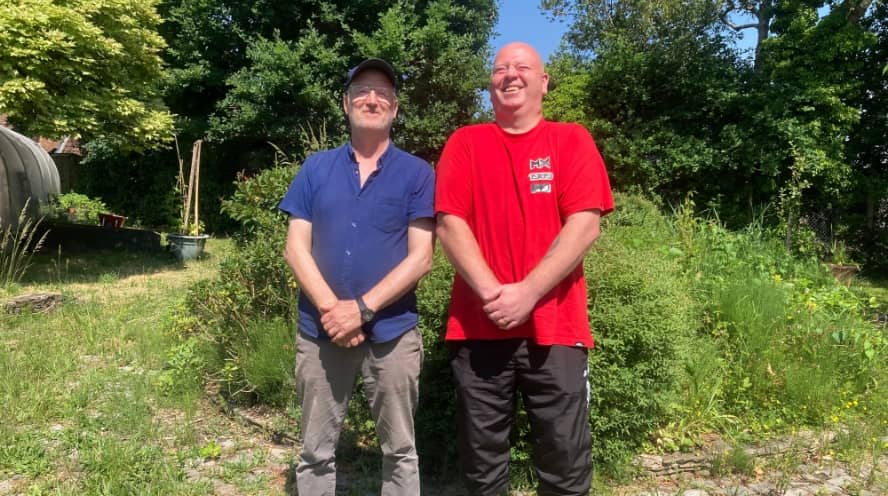
Darren Lewis, right, raised money for the Traumatic Brain Injury Service after receiving treatment himself following a motorbike accident. He is pictured with rehab specialist
Rob May.
He organised a sponsored bike ride to and from Dunvant Rugby Club to Knab Rock in Mumbles, raising over £900 for the service.
Darren felt a sense of achievement by giving back to the service and ensuring future patients are able access rehabilitation opportunities in the community.
How we make a difference
Cutting-edge equipment
In 2022-23, £58,000 of charitable funds was spent on a wide range of cutting-edge medical
and other equipment to help our patients, their families and support our amazing staff.
Regaining independence

Regaining independence
Money you raised has allowed us to harness cutting-edge technology to create relatively simple but life-changing devices to give people with disabilities greater independence.
It helped cover the costs of raw materials which were used to develop a range of personalised devices and aids, such as holders for deodorant, hair curlers and nail varnish.
Using computer-aided design and state-of-the-art 3D printing Jonathan Howard, a clinical scientist at the Rehabilitation Engineering Unit based at Morriston Hospital, produced designs which were then used in the production of devices to meet individuals’ needs.
Georgia Sinclair, who has hemiplegia (paralysis of the left-hand side of her body) was among those to benefit from the innovative project.
She said: “I have struggled with trying to be independent again, and Jonathan has been designing products for me to become more independent, such as to help me do my hair.
“The struggle with being a disabled person is that you lack independence on things that you know are so simple. I have become a lot more independent. It has benefited me a lot.”
Fellow participant Daniel Jones, who can’t use his right hand due to cerebral palsy, had a deodorant holder made which allowed him to put deodorant under his left armpit using his left hand.
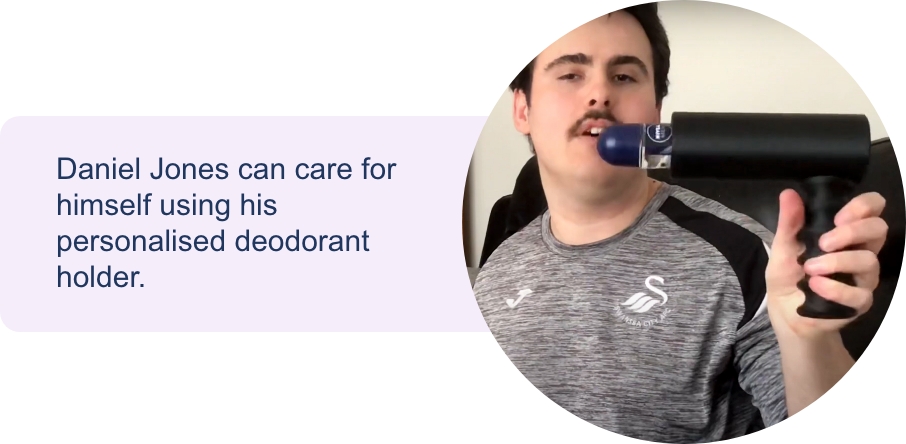
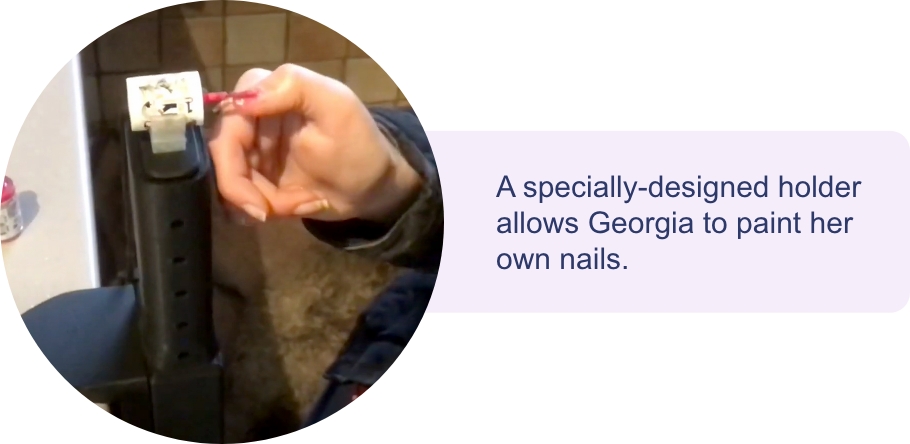
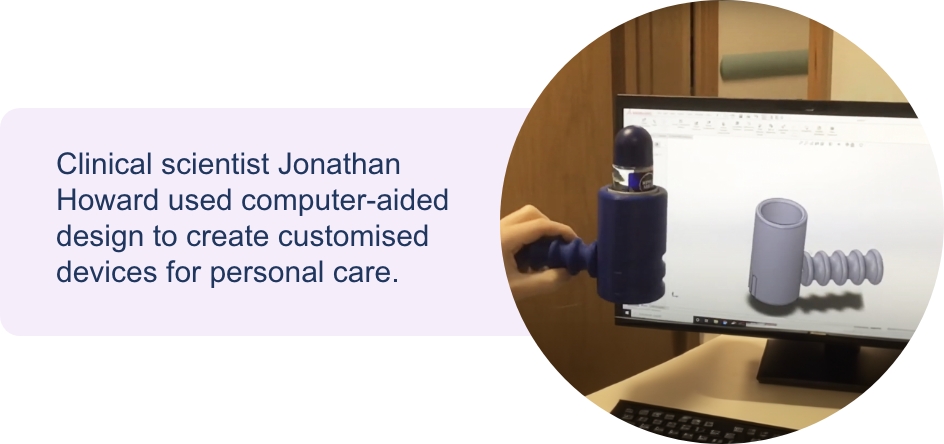
Diagnostic development

Diagnostic development
Prostate cancer is the most common cancer in men and affects around one in eight men in the UK during their lifetime.
In Wales, more than 2,800 men are diagnosed every year.
A biopsy, where a small amount of tissue is taken so it can be
examined under a microscope, is a key step in confirming a diagnosis.
Charitable funds purchased a piece of equipment that improves this process for both patients and staff.
The Prostate Triplane Transducer was purchased as part of a prostate cancer diagnostic service development.
Its sleek design minimises patient discomfort and makes it easier for the operator to hold.
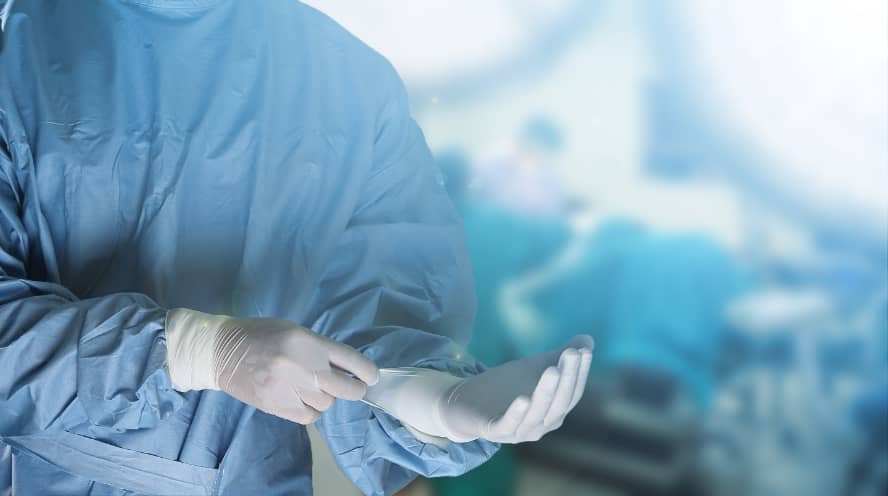
Minimising patient discomfort during prostate biopsies.
How we make a difference
Enhancing buildings and spaces
Improving the environment patients are treated in can have a positive impact on their overall
wellbeing and recovery. It’s also better for the morale of staff and loved ones who visit the patient.
A lasting tribute

A lasting tribute
Stone seating pods with timber benches, inlaid with handmade clay tiles, are a poignant and lasting tribute to the impact of the Covid-19 pandemic and a quiet outdoor space in which to reflect and recharge.
The £100,000 project – funded entirely through charitable funds – saw the benches built at Morriston, Singleton, Neath Port Talbot and Cefn Coed hospitals following extensive engagement with health board staff.The inlaid tiles reflected the thoughts of NHS staff, schoolchildren, and members of the public in the Swansea Bay area.
The project was led by health board heritage lead, Martin Thomas.
He said: “They are placed in busy hospital sites as we also wanted them to convey hope and resilience, and to be practical and offer usable outdoor spaces for everyone for now and in the future, supporting the wellbeing of the staff, patients and visitors who use them.”
The project actively involved a wide range of health board staff, who participated in arts workshops to create clay tiles bearing their heartfelt messages.
Leading the art work was Welsh artist Nigel Talbot, who was chosen because of his previous impressive community involvement including working with schools and the public. Nigel built his vision with the help of award-winning dry stone waller Allan Jones.
Primary school children local to each hospital site also helped to create the clay tiles, and members of the University of the Third Age (U3A) were also engaged in the workshops, adding to the collaborative spirit of the project.
The project was funded through a grant to Swansea Bay Health Charity from NHS Charities Together.
Swansea Bay Health Charity funds the maintenance of the
commemorative gardens.
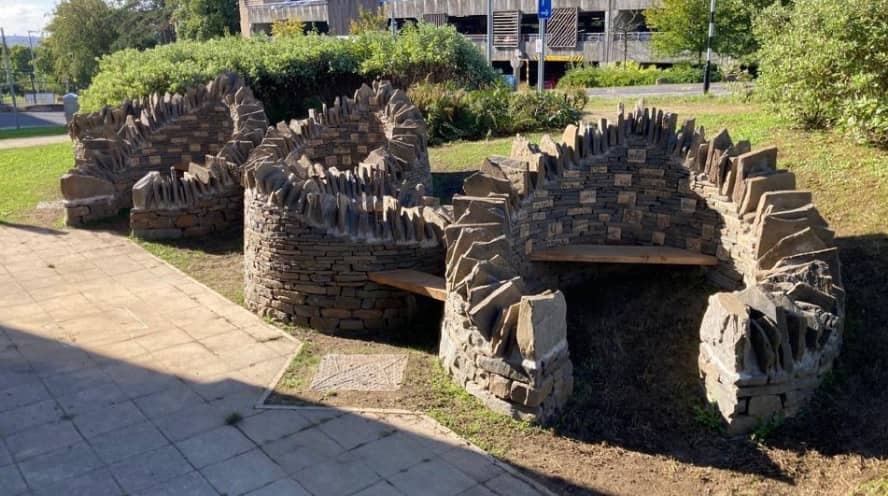
The commemorative stone seating pods at Morriston Hospital.
How we make a difference
Patient and family wellbeing
During uncertain and stressful times, it’s important that the overall wellbeing of patients and
families is supported. This can be done in a number of ways, from the small gestures that raise
a smile to the bigger projects which play a fundamental role in the treatment journey.
Ward’s wellbeing room hope

Ward’s wellbeing room hope
Patient Helen Morgan and colleagues went the extra mile to raise £2,500 for the ward which has saved her life on more than one occasion.
She was also joined by friend Geraldine Williams in a sponsored swim.
Family friend and Wales rugby star Jac Morgan joined Helen to present a cheque to Singleton Hospital’s oncology and haematology ward.
The money will be used to help them achieve their ambition of creating a wellbeing room for patients and staff.
Helen has a rare blood disorder that wipes out her immune system and she has to call the ward if she becomes unwell.
Wanting to do something to thank the team, Helen asked her work colleagues at Swansea-based haulage firm, A T Morgan and Son, to accompany her on a 10-mile sponsored walk.
“They have literally saved my life a few times,” said Helen.
She is full of praise for the ward and its staff.
She said: “The work they do here is sometimes very quietly done. I don’t think people know the extent of this ward, the haematology and oncology sides, and how important it is to everybody who does have an issue with immunity or cancer care where immunity is a problem. Until you have actually been and seen it for yourself, which I have several times.
“I’d like to say thank you to them for keeping me alive. I’m still here and I’m still fighting.
“Hopefully, in the future, I will be raising more money for them again.”
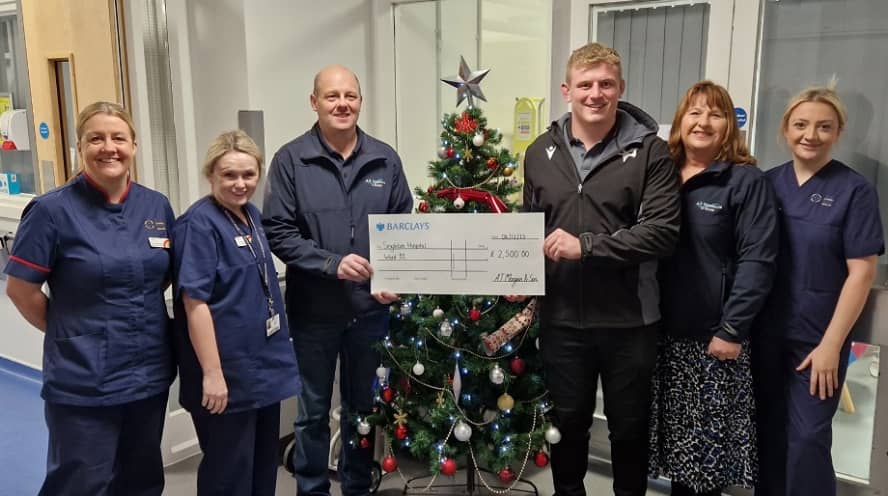
From left to right: Amy Saunders, Matron, Jo Woozley, ward manager, Stephen Morgan, Jac Morgan, Helen Morgan, and Lowri Williams, nurse.
Stepping up to grow rehab service

Stepping up to grow rehab service
A stroke survivor who had to learn how to walk, talk and eat again is helping other patients facing similar challenges.
Barbara Thomas, who has limited mobility, completed a sponsored walk to raise more than £3,000 which will go towards creating a sensory garden for the neuro rehabilitation unit at Neath Port Talbot Hospital.
The aim is to heal and inspire other patients with brain injuries, while thanking staff for the wonderful care she received.
Barbara’s three-mile walk with family, friends and hospital staff along Aberavon seafront also got the Royal seal of approval from the Prince and Princess of Wales. A letter from Kensington Palace called her dedication “truly inspiring”.
Barbara said: “I have come to a stage in my life where I want to give something back for the wonderful care I have had and continue to have from the neuro-rehabilitation ward.
“I just can’t thank all of the staff enough and that’s why I wanted to do the challenge.
“They deserve everything. They took great care of me – every single nurse and even the cleaners and food team.
“They are angels and they were all wonderful to me.”
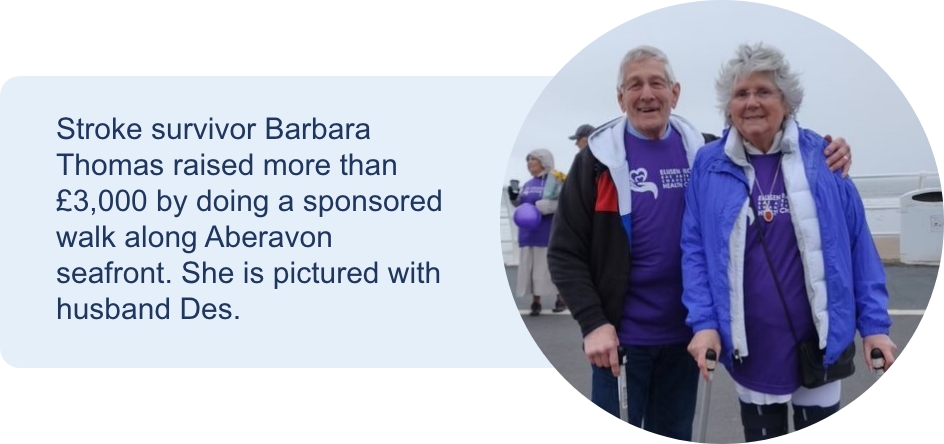
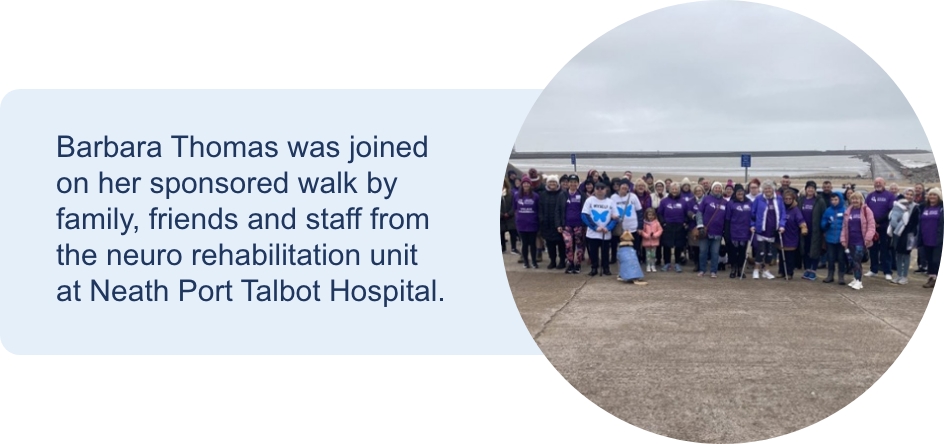
How we make a difference
Staff wellbeing and training
The beating heart of every one of our services is our staff and we need to care for them as
they care for our patients. Supporting their training also boosts staff and patient wellbeing.
Express yourself

Express yourself
An initiative is helping staff reflect on and open up about the challenges they face.
Sharing HOPE (The Art of Healing Together) is a therapeutic arts project available to all Swansea Bay University Health Board staff. It highlights the power of sharing stories, capturing Covid recovery, processing moral trauma and the de-stigmatisation of mental health.
The project aims to improve staff wellbeing and retention, to maximise the opportunities for early recognition of anxiety and depression, and prevent escalation.
It is a collaboration between Arts and Heritage and Suicide Prevention Quality Improvement leads.
The project received strategic funding from the Arts Council of Wales and The Baring Foundation in 2021 as part of their national Arts and Minds programme, improving mental health through the arts.
In the first 18 months, more than 950 members of staff engaged with artists who facilitate a wide variety of high-quality activities.
Artists who have worked with staff include Gini Hearth (lead artist, arts psychotherapist), Menna Buss (textile community artist), Ami Marsden (sculptor), Sarah Jones (ceramic artist) and Bec Gee (arts facilitator).
In its first year Sharing Hope won an SBUHB LOV Award and been a finalist in the HSJ Patient Safety Awards (Best Staff Wellbeing Initiative).
Sharing HOPE’s first creative project was a moving video of staff members reciting lines from a poem about what Covid meant to them.
There were also sand sculpture events on local beaches in the summer for staff members and their families and friends, and textile classes.
The initiative won the Best Staff Wellbeing Initiative at the Nursing Times Workforce Summit and Awards in London.
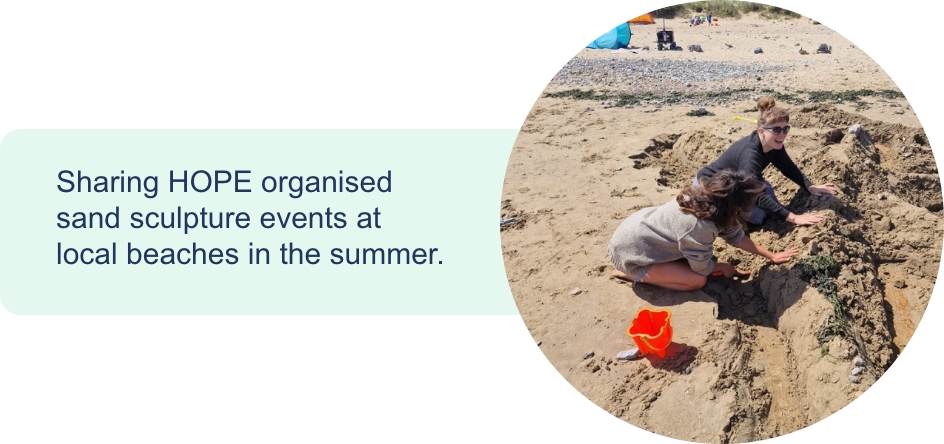
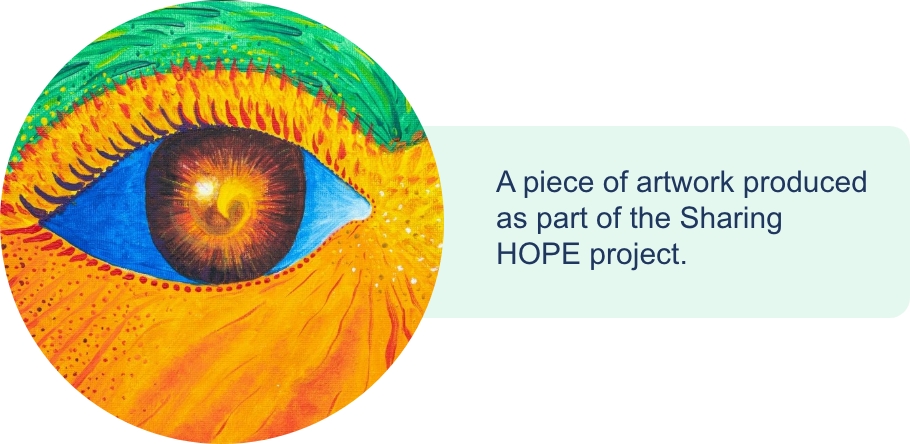
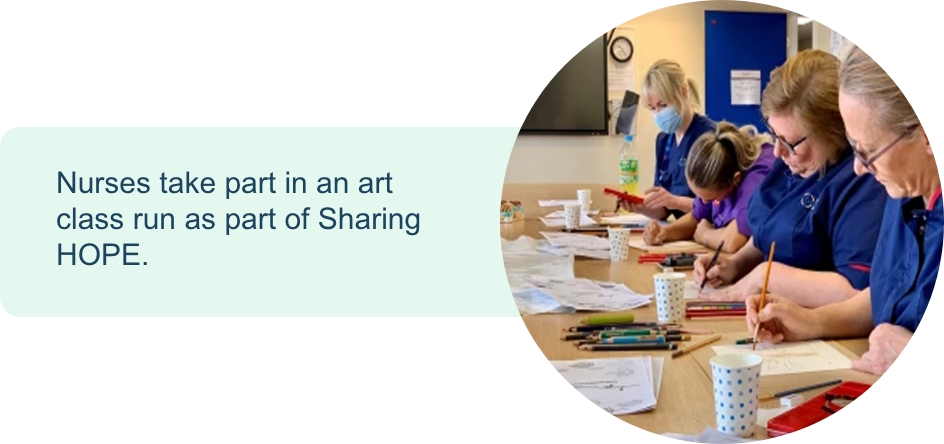
Investing in staff training

Investing in staff training
Charitable funds are used to keep our staff up to date and help them network with colleagues by giving them opportunities to attend training and conferences not covered by core NHS funding.
This is a list of training topics covered and conferences attended in 2022-23:
- Radiotherapy breast localisation
- Post graduate renal nutrition
- Interpretation of blood results
- Quality management systems
- Minor illness
- Clinical assessment
- Communication tools for palliative and end of life
- IOSH managing safety
- Biomechanics for birth
- British Burns Association Annual Conference
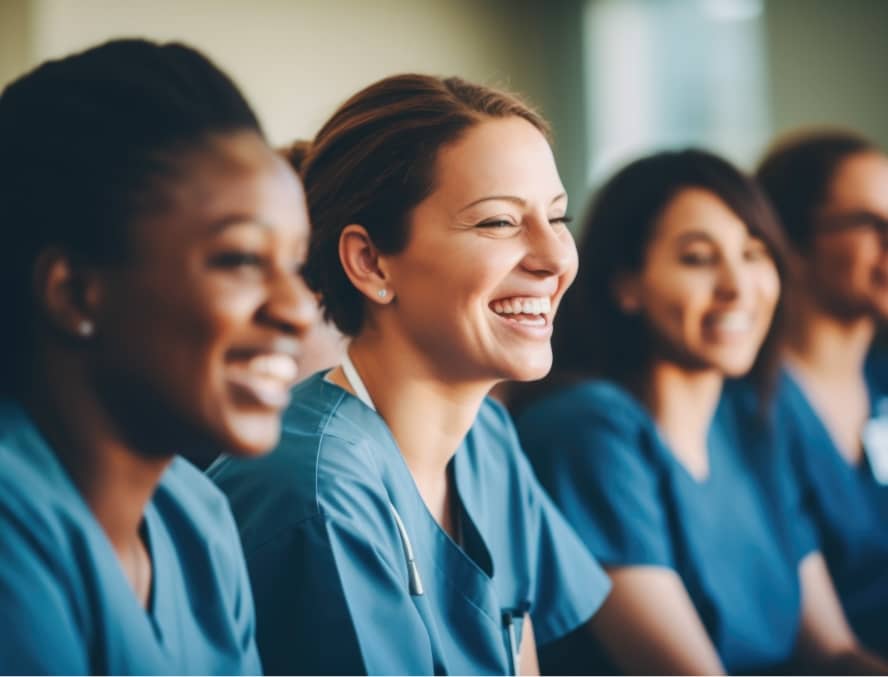
Charitable funds are used to keep our staff up to date and help them network with colleagues.
